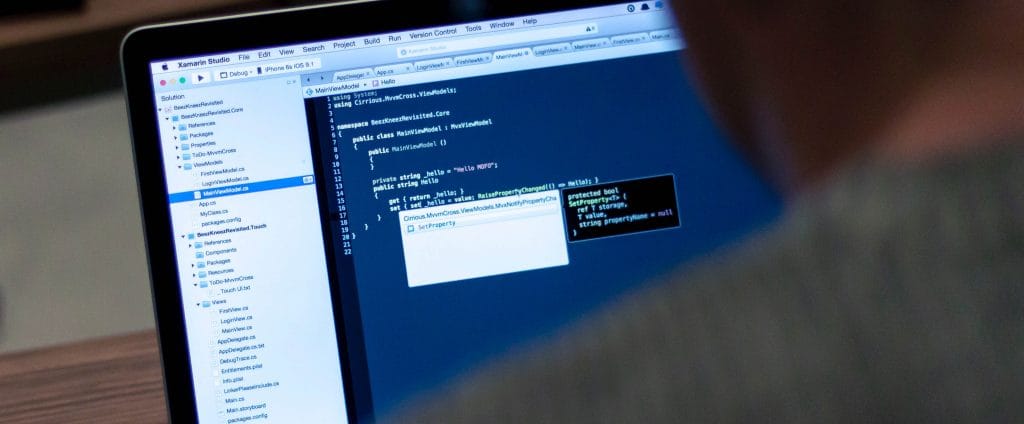8 Emerging Technologies to Watch in 2021
December 24, 2020
The year 2020 is almost about to end, in a very different way than it started. This pandemic has made businesses transform digitally more than ever before. The number of businesses that have moved online in the past six months alone is more than those in the last decade.
There’s a lot at stake for 2021. The question is whether mainstream technologies such as data analytics and AI will remain a force. Or will we see newer forms of technology dominating the year? Even if time is the sole judge and determinant, here are possible technology trends we believe will dominate 2021
1. VR enhancing touch
To develop this technology, a prototype device has been produced and perfected by researchers at Northwestern University (USA). The product stands out with its ability to emit tactile signals using a material with microscopic vibrating particles attached to the skin.
The device, called epidermal VR, can be used to send the intimate touch of a child in kindergarten to distant parents or to give the feeling of touch to objects with limbs.
With the game industry, it can generate corresponding warnings on body parts when the character the player controls is attacked at different locations.
The development team created a device of 32 vibrating points mounted on a 15cm x 15cm silicone polymer sheet that sticks to the skin without needing tape, straps or batteries or wires.
The device uses NFC technology to transmit data. This is a short range wireless connection technology that is widely used in mobile payments on smartphones today.
The researchers hope to develop the aforementioned epidermal VR device into clothing, thereby allowing those who have to use prosthetic hands and feet to wear the device to expose it to a more real sensation.
2.Internet for everyone
Nowadays, it is difficult to live and work without an Internet connection. Even so, it is known that about half of the world’s population do not have the Internet for objective reasons.
This situation has caused some of the tech giants to embark on the implementation of great projects for humanity. Google is slowly spreading the Internet ‘super huge’ flight to remote areas, while Facebook had plans to use drones to provide Internet networks to remote areas.
Most recently, we have SpaceX and Amazon with a project to provide the Internet for humanity using artificial satellites. While Elon Musk has ambitions to launch about 42,000 satellites, Jeff Bezos plans to put about 3,236 small satellites in low-Earth orbit.
In the Netherlands, they have succeeded in launching two satellites into Earth orbit to provide Internet connectivity for Antarctica.
3. Computer vision
“Vision” here refers to systems that can identify objects, places or people from visual images – those collected by cameras or sensors. This is technology that allows a smartphone camera to recognize which part of an image it takes is a face and supports technologies such as Google Image Search.
In 2020, production lines will use computer vision cameras to track defective products or equipment failures, and security cameras will be able to warn of anything out of the ordinary, without supervision 24/7.
However, as computer vision use cases increase in 2020, there will also be a lot of debate about how to limit the use of this technology, as they greatly affect privacy.
4. Self-driven cars
At first, no one thought that automation technology (mostly by robots) would develop as rapidly as it is today. However, in unexpected situations such as a pandemic, when people are limited to meeting each other, people will find this direction the right direction.
The potential of this technology is enormous. In the future, robots will replace humans working in harsh and hazardous environments (such as a chemical-rich environment, with epidemics). It’s convenient, isn’t it?
In addition, we can also apply this field to areas such as unmanned vehicles. Instead of driving yourself or relying on the driver to take you to the desired place, this technology will automatically locate and control the car to bring the user to the preset location. I think this will be a strongly developed field in the future.
5. From AR to VR XR
It can be explained as follows, VR (short for Virtual Reality: Virtual Reality) is applied when you put a glasses-type device on your eyes and experience realistic images
While AR (short for Augmented Reality: Augmented Reality) is by nature images in reality visible to the naked eye. However these images are enhanced or augmented with virtual information. It makes the images right in front of your eyes become richer.
VR can be considered as a completely virtual world created by computers, and AR is the real world enhanced with images or additional virtual information.
Equally attractive technology is the XR (Augmented Reality Technology) that is set to explode in the next few years. In essence, we can see XR as a composite of AR and VR technologies, along with a few other factors.
When the technology is complete, you can interact with environments that fuse reality and illusion just like a fantasy movie. Of course that will be the story of the future, but now researchers are still perfecting this potential technology trend.
6. Hyper Automation
In other words, this is the process of using complex technology to replace human intervention. In order to do this, super applications must use technologies including artificial intelligence (AI), machine learning (ML) to enhance the automated processing, instead of humans to perform tasks such as discovery, analysis, design, automation, measurement, monitoring, reassessment, etc.
From the emergence of super apps, digital twins – use digitally that reflect the actual object, process, or system conceived in an organization.
A normal application cannot replace human decisions, so the super application is integrated with many tools, including Automatic Processing by Robot (RPA), Smart Enterprise Management Software. (iBPMS) and AI. The goal is to strengthen decisions made by artificial intelligence.
In addition, the super application allows enterprises to visualize functions, digital replication processes, and performance indicators with high accuracy. Accordingly, digital production becomes an indispensable part with the super automatic process, continuously providing information data, time about the organization, promoting potential business opportunities.
7. Dispersion cloud
This solution refers to the delivery of the public cloud service to locations outside of the cloud provider’s data center, but still within their control. In distributed clouds, the provider is responsible for all aspects of the cloud architecture, operations, management, and updating. The evolution from a centralized public cloud to a distributed public cloud opens up a new era of cloud computing.
The distributed cloud allows data centers to be placed anywhere. This solves all technical issues like latency and legal challenges like data sovereignty. This solution also provides the benefits of a public cloud in addition to the benefits of a local private cloud.
8. Empowered Edge
Empowered Edge is a topology where information processing and collection and delivery of content is placed closer to information sources, with the idea that keeping traffic locally will decrease latency. This trend also covers all technologies on the Connect of Things (IoT) platforms. Edge computing looks at how these devices grow and form intelligent spaces, and bring critical applications and services closer to the people and devices that use them.
By 2023, the number of smart devices on the edge of the network could be 20 times more than in a normal ICT role.
Conclusion
The above technologies are not only for building the future, but they are present and are an effective aid to businesses to cope with market demands and challenges in preserving a state-of-the-art system.
Keep reading about
LEAVE A COMMENT
We really appreciate your interest in our ideas. Feel free to share anything that comes to your mind.
Our 16 years of achievements includes:
-
10M+
lines of codes
-
2400+
projects completed
-
900+
satisfied clients
-
16+
countries served







